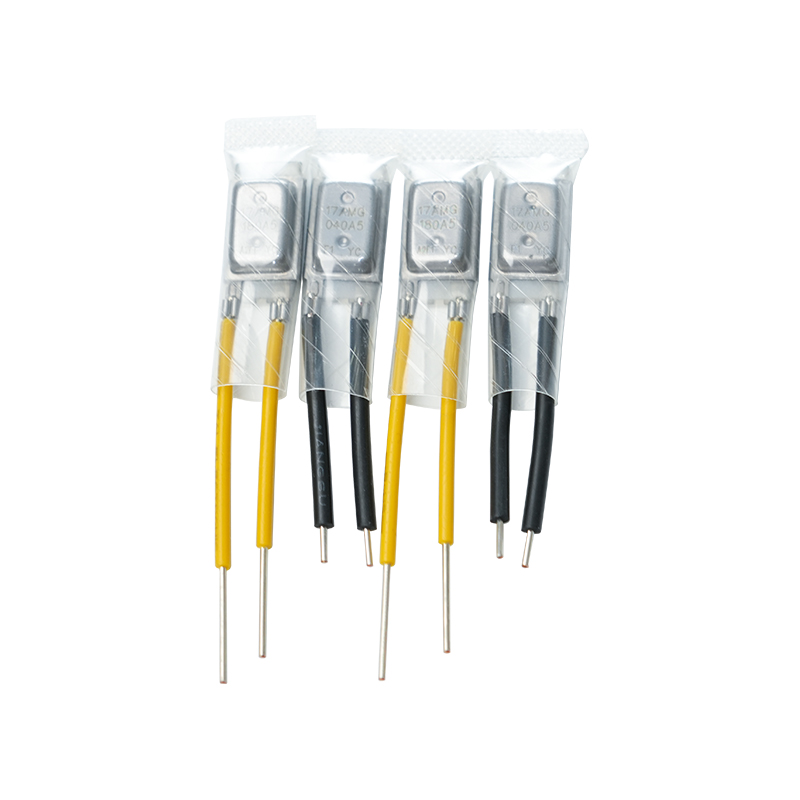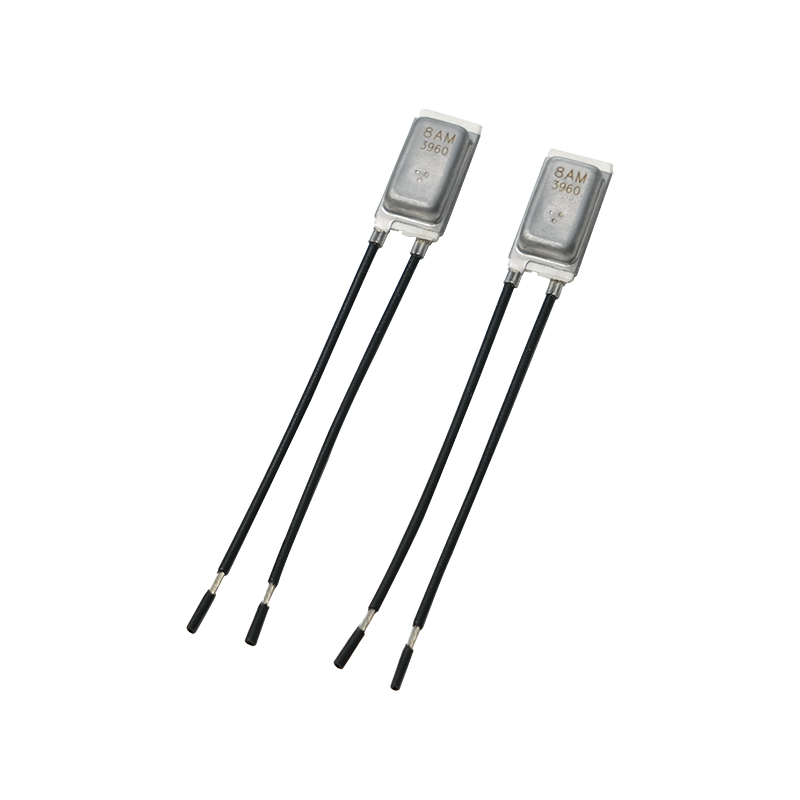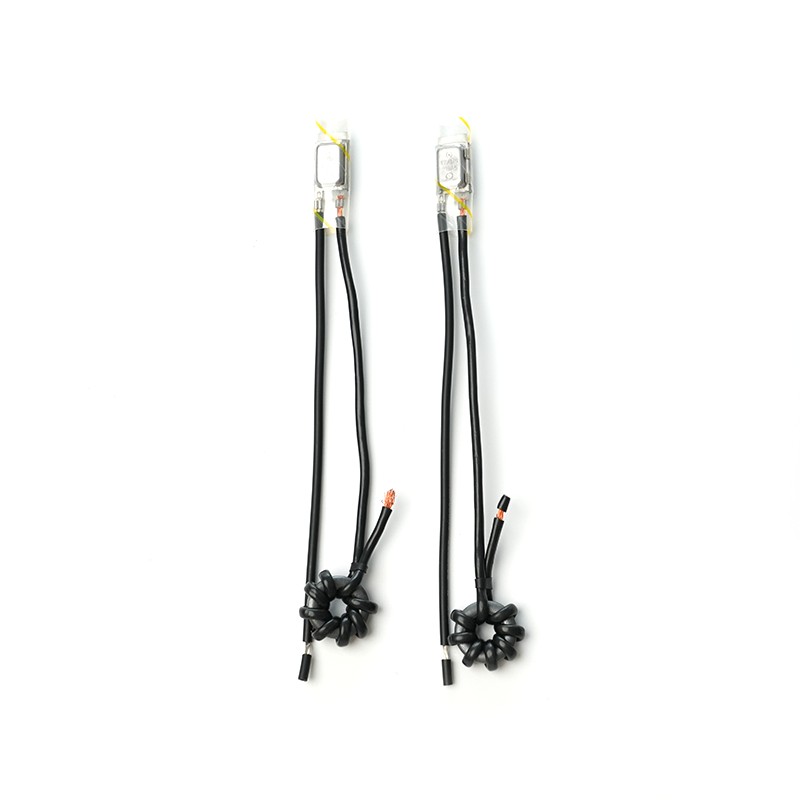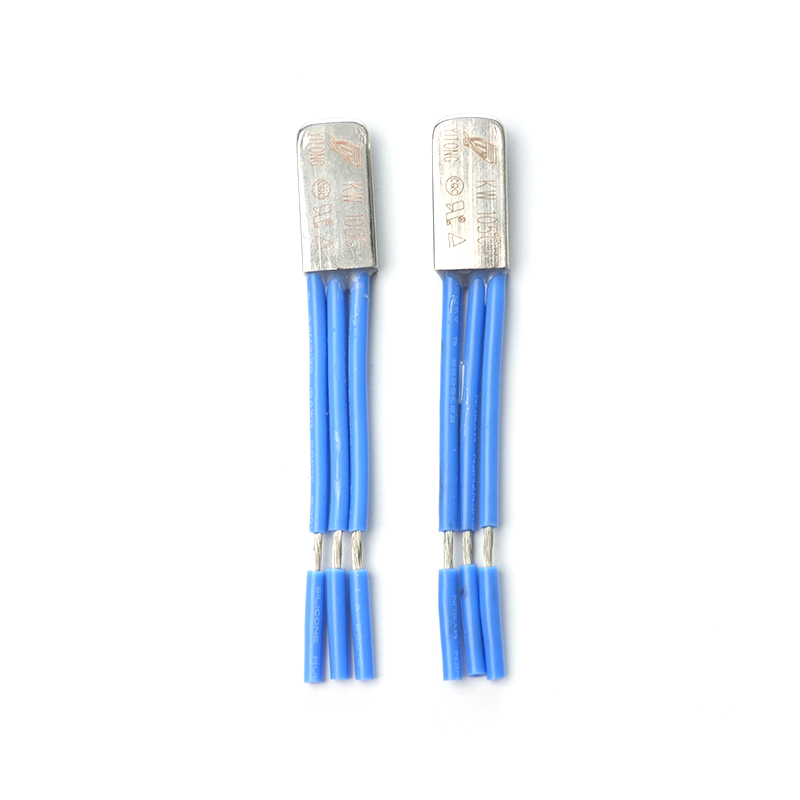What Are the Advantages of Using a Snap Switch Thermostat Compared to Other Types of Thermostats?

Thermostats are essential devices in both residential and industrial applications, regulating temperature to maintain comfort, safety, and process efficiency. Among the different types of thermostats available, snap switch thermostats—also known as bimetallic snap-action thermostats—stand out due to their simplicity, reliability, and cost-effectiveness. These thermostats are widely used in household appliances, HVAC systems, industrial equipment, and various temperature-sensitive devices.
This article explores the advantages of snap switch thermostats compared to other types of thermostats, including mechanical, electronic, and digital variants.
1. Understanding Snap Switch Thermostats
A snap switch thermostat is a temperature-controlled switch that activates or deactivates electrical circuits in response to temperature changes. Its operation relies on a bimetallic strip, which is composed of two metals with different coefficients of thermal expansion. When the temperature reaches a preset point, the bimetallic strip bends, causing the snap-action mechanism to quickly open or close the electrical contacts.
Key Components:
- Bimetallic Strip: Responds to temperature changes by bending due to differing expansion rates.
- Snap Mechanism: Ensures a rapid transition between open and closed states, reducing arcing.
- Electrical Contacts: Complete or break the circuit.
- Adjustment Mechanism: Allows calibration of temperature setpoints in some designs.
The snap-action ensures fast switching, precise temperature control, and long-term durability.
2. Types of Snap Switch Thermostats
Snap switch thermostats come in various forms, tailored for different applications:
- Normally Closed (NC): The switch is closed at ambient temperature and opens when the setpoint is reached.
- Normally Open (NO): The switch is open at ambient temperature and closes when the setpoint is reached.
- Single-Pole Single-Throw (SPST): Simple on/off control for one circuit.
- Single-Pole Double-Throw (SPDT): Offers two switching states, suitable for heating and cooling control.
Their versatility makes them adaptable to both simple and moderately complex temperature control systems.

3. Advantages of Snap Switch Thermostats Compared to Other Types
a. Fast and Reliable Switching
- The snap-action mechanism allows the contacts to open or close almost instantaneously once the setpoint is reached.
- Compared to gradual-acting bimetallic thermostats or some electronic models, snap switches reduce contact arcing, which extends the device’s life.
- This rapid response is particularly valuable in applications requiring precise temperature control, such as water heaters or industrial machinery.
b. Durability and Longevity
- Snap switch thermostats are mechanically simple, with fewer electronic components susceptible to failure.
- The robust bimetallic strip and snap mechanism can withstand repeated cycles without significant wear, making them ideal for high-cycle applications.
- Unlike some electronic thermostats, snap switches are resistant to voltage spikes, electromagnetic interference (EMI), and transient surges.
c. Cost-Effectiveness
- Snap switch thermostats are low-cost devices, making them attractive for mass-produced appliances and budget-conscious industrial installations.
- They require minimal auxiliary components, reducing overall system cost compared to complex digital or programmable thermostats.
d. Simplicity and Ease of Use
- These thermostats are easy to install and integrate into existing systems.
- No programming or configuration is necessary in most cases; the setpoint is mechanically adjustable or factory-calibrated.
- Their straightforward design allows easy troubleshooting, as failures are often obvious and mechanically traceable.
e. Wide Temperature Range and Stability
- Snap switch thermostats can operate reliably across a broad temperature range, from sub-zero to several hundred degrees Celsius, depending on materials.
- The bimetallic strip maintains consistent thermal expansion behavior over time, ensuring stable and predictable switching.
- Some electronic or digital thermostats may suffer from temperature drift over prolonged use, requiring recalibration.
f. Low Power Consumption
- Snap switch thermostats do not require a continuous power supply to operate the sensing mechanism.
- They consume very little energy, making them ideal for energy-sensitive applications.
- Compared to electronic thermostats with sensors and displays, snap switches are more energy-efficient.
g. High Mechanical and Electrical Tolerance
- Snap switch thermostats are resilient to mechanical shocks and vibrations, which is essential in industrial environments.
- They can handle moderate to high current loads directly through the contacts without requiring additional relays or switching devices.
- This tolerance makes them suitable for applications like heaters, compressors, ovens, and refrigeration units.
h. Versatility in Applications
- Household Appliances: Water heaters, ovens, irons, coffee machines, and toasters.
- Industrial Equipment: Motors, pumps, furnaces, and compressors.
- HVAC Systems: Boilers, air conditioners, and heat pumps.
- Safety Devices: Over-temperature protection and cut-off switches.
Their adaptability to both heating and cooling applications sets them apart from specialized thermostats that may require complex controllers.
4. Comparison with Other Thermostat Types
a. Electronic Thermostats
- Pros of Electronics: Programmable, remote control, integration with smart systems.
- Limitations: More components can fail, sensitive to voltage fluctuations, higher cost, and slower response in some designs.
- Advantage of Snap Switch: More robust, faster switching, and maintenance-free for long-term operation.
b. Digital Thermostats
- Pros of Digital: Accurate setpoints, display readings, programmable schedules.
- Limitations: Dependent on power supply, more expensive, and may require calibration over time.
- Advantage of Snap Switch: Simpler, mechanically reliable, works even without continuous power.
c. Mercury or Liquid Thermostats
- Pros of Mercury: Smooth, reliable operation for low-current circuits.
- Limitations: Mercury is toxic, environmentally hazardous, and restricted in many regions.
- Advantage of Snap Switch: Safer, environmentally friendly, and compliant with modern safety regulations.
5. Maintenance and Reliability Considerations
Snap switch thermostats require minimal maintenance but benefit from the following practices:
- Periodic Inspection: Check for mechanical wear, contact corrosion, or debris accumulation.
- Cleaning Contacts: If oxidation occurs, clean the contacts to maintain low-resistance switching.
- Avoid Overloading: Ensure the current and voltage ratings are not exceeded, preventing contact welding or burnout.
- Environmental Protection: Install in dry, dust-free, and vibration-minimized environments to maximize lifespan.
With proper use, snap switch thermostats can last tens of thousands of cycles, outperforming many electronic alternatives in durability.
6. Limitations and Considerations
While snap switch thermostats offer numerous advantages, there are some limitations:
- Limited Precision: Compared to digital thermostats, snap switches have a wider hysteresis (temperature difference between switching on and off).
- Manual Adjustment: Fine-tuning may require mechanical adjustments or replacement.
- No Remote or Smart Control: They are typically standalone devices without network integration capabilities.
However, these limitations are offset by the cost, reliability, and robustness that snap switches provide, especially in applications where extreme precision or connectivity is not critical.
7. Conclusion
Snap switch thermostats provide numerous advantages over other types of thermostats, making them a popular choice in household appliances, industrial machinery, and HVAC systems. Key benefits include:
- Fast and reliable switching due to the snap-action mechanism.
- High durability and long service life under repeated cycles.
- Cost-effectiveness, suitable for large-scale production or budget-conscious applications.
- Simplicity and ease of installation, requiring minimal programming or adjustment.
- Wide operating temperature range and stability over time.
- Low power consumption and mechanical robustness.
- Versatility across heating, cooling, and safety applications.
While they may not provide the precision, programmability, or connectivity of digital or electronic thermostats, snap switch thermostats excel in reliability, energy efficiency, and low maintenance, making them a superior choice in many practical applications. For industries and consumers seeking robust, simple, and cost-efficient temperature control, snap switch thermostats remain an indispensable component.
 English
English







